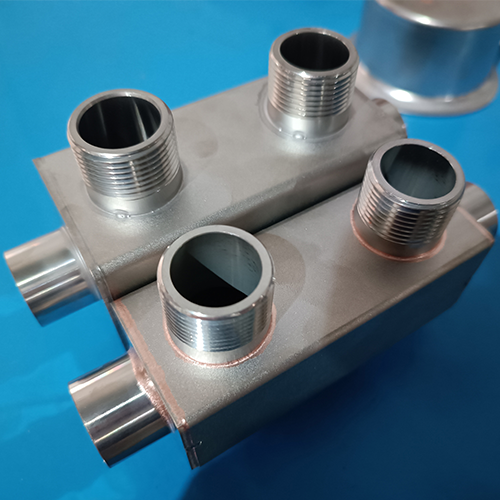Why do stainless steel water distribution pipes undergo brazing heat treatment
Sep. 10, 2025
Eliminating residual welding stress to prevent structural deformation and cracking.
Source of stress: During the brazing process, uneven local heating and cooling can generate residual stress in the weld and heat-affected zone (HAZ) of stainless steel water distribution pipes. If these stresses are not promptly eliminated, they can cause pipe deformation, cracking, and even leakage during use.
The purpose of heat treatment: Brazing heat treatment can homogenize the metal structure of the weld and HAZ, eliminate residual stress, and thus prevent structural deformation and cracking, ensuring the long-term stable operation of the pipeline system.
Improve weld microstructure and enhance joint performance.
Microstructural changes: During brazing, rapid cooling of the weld metal can lead to coarse grains or an unbalanced microstructure. This can result in high joint hardness and poor ductility, making the joint susceptible to cracking during processing or use.
Heat treatment optimization: By controlling the heating temperature and holding time, brazing heat treatment can induce recrystallization of the weld metal, refine the grain size, and improve the microstructure. This reduces hardness, improves ductility and toughness, and brings the joint performance closer to that of the parent material, meeting processing requirements, such as pipe bending and expansion/contraction.
Restoring Corrosion Resistance and Extending Service Life
Corrosion Risk: Improper brazing techniques or inadequate protective measures during the brazing of stainless steel water distribution pipes can lead to chromium depletion in the weld and heat-affected zone, reducing corrosion resistance.
Heat Treatment Repair: Brazing heat treatment (such as solution treatment) fully dissolves carbides in the austenite, forming a uniform solid solution during rapid cooling. This restores the stainless steel's corrosion resistance and extends the service life of the piping system.
Release harmful gases to prevent delayed cracking
Gas residue: During brazing, if the shielding gas is impure or the welding environment is poor, harmful gases (such as hydrogen) may remain in the weld metal. These gases may gradually release during pipeline use, causing delayed cracking.
Heat treatment: Brazing heat treatment can fully release harmful gases from the weld metal through high-temperature insulation and rapid cooling, thereby preventing delayed cracking and ensuring the safety and reliability of the pipeline system.










